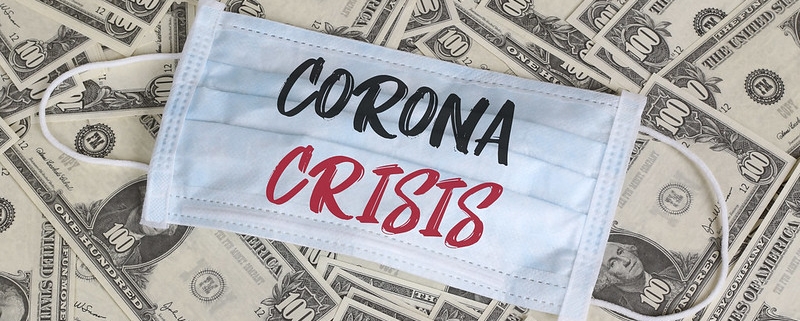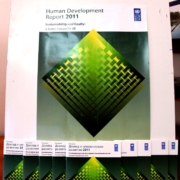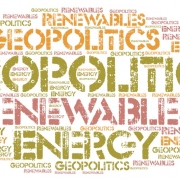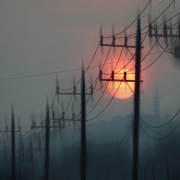A health global crisis turning into an energy crisis or an opportunity?
The outbreak of the COVID-19 virus seems to have hit every aspect of modern societies; from the economy, health, employment, energy and transport to politics. Media analysts and policy experts talk about the disastrous impact of the virus on the global economy and the unknown that will follow, once the global lockdown is lifted.
Amid this panic and darkness, an interesting article published on Bloomberg Green on the 1st of May appears to bring hope for the future. The article spots some interesting aspects of the lockdown on the energy sector and its positive impact on the climate (Lombrana, 2020).
Shedding light in the global crisis darkness
It is well known that over the last decades, scientists have been warning the global community over the disastrous environmental impact of human pollution on the planet and the scarcity of the fossil fuel due to imbalanced relation between energy demand and supply.
The introduction of partial and full lockdowns worldwide has seen a tremendous drop in energy use and CO2 emissions. According to IEA’s recent report, ‘global energy demand declined by 3.8% in the first quarter of 2020’ (IEA, 2020). Pausing daily activities and keeping transport to a minimum, while freezing electricity demand for industrial buildings – to levels that remind that of a prolonged Sunday – the carbon emissions seem to have dramatically dropped, whereas energy demand for fossil fuel has experienced a steep drop. Compared with the first quarter of 2019, coal has been hit the most over this quarter with 8% decrease in demand followed a 5% drop on oil demand.
Interestingly enough, IEA’s analysis notices that renewable energy is the only energy source with growing demand rate during the first quarter of 2020. Studying the impact of the COVID-19 on the energy sector, IEA’s scenario assumes that several-month restrictions on mobility and socioeconomic activity will result in a 6% drop in energy demand, ‘the largest in 70 years in percentage terms and the largest ever in absolute terms’ (IEA, 2020). Equally, global carbon emissions are expected to fall by 8% to the point that if these year-on-year reductions continue, it will be the largest ever in human history (IEA, 2020).
Is the world shifting towards a cleaner energy future really?
Based on the above scenario, could this mean that the world is shifting towards a cleaner energy future? Undoubtedly, recovery will be slow. Due to the energy supply abundance, energy prices are not expected to increase in the post-pandemic era. However, the energy demand trend is quite uncertain how it will fluctuate (Grigas, 2020). The answer to the question above is quite ambiguous depending on how the future energy mix will be shaped within the following months to years. It’s worth mentioning here that the analysis below is only an estimation rather than a forecast; it is quite difficult to presume the future energy trends at this point, as there is no historical precedent for such a global crisis.
For a fact, wind and solar power have become more affordable due to their lower operating costs and their easy interchangeability on the energy mix compared to fossil fuel – especially coal and oil. Nevertheless, this latest trend might be temporary – corresponding to the needs of the current tight restrictions. When recovery takes place, it is rather possible that energy demand will resume to its previous levels making up for the previous underperforming quarter, driving also carbon emissions to a rebound level.
Some closing thoughts
Following this short analysis, here are some closing thoughts; as societies gradually return to normality, energy demand will resume respectively leading to rising carbon emissions. As discussed above, it might be true that there is a: (1) clear lead of the renewables against the fossil fuel and (2) a drop in the carbon emissions is temporary. However, this does not guarantee the end of the fight against climate change. There are many factors that can shape the future energy sector including policymakers, investors and individual behaviour.
A crucial role for the future energy sector will play policymakers depending on which energy source – fossil or renewable – they will decide to a bailout. Global leaders and foreign investors need to think in the long run. The favourable status towards renewables is ideal to move towards this direction, while the crisis in fossil fuel commodities continues. Transitioning into a cleaner energy sector will require decisive measures to encourage investment in renewables.
Towards this direction, the individual behaviour and patterns are decisive for the implementation of energy goals set by the governments. Changing the way of thinking and becoming more responsible should not only adhere to the health sector but also towards the environment. Over this period, it seems that the public has become more environmentally conscious by exerting pressure to policymakers and the private sector. A characteristic example is the successful attempt to pause the Arctic-Oil Loans in the United States. Although this achievement is not a result of the coronavirus period but rather an ongoing fight of activists to keep oil-exploitation out of the Arctic National Wildlife Refuge, it seems that the current situation has favoured public mobilisation and reaction.
As for the private sector, the aggravated economy of a COVID-19 era shows that staying committed to climate change mitigation and reaching the Paris Agreement goals will not only benefit the economy but will also help businesses to build a better socially responsible profile. Following the above case of the Arctic Oil operations, the public pressure in line with the declining demand due to coronavirus seems to have played an important role in the decision of private banks to step back. This example should inspire other companies around the world to start investing in low carbon projects that will be proved both financially and environmentally beneficial for them and the societies they live in.
Photo: Jernej Furman, Blue medical face masks with money and Corona Crisis text. US Dollars and a face mask. (2020). Source: (flickr.com) | (CC BY 2.0)
Bibliography
Ambrose J. (2020) Covid-19 crisis will wipe out demand for fossil fuels, say IEA, The Guardian, 30th April, Available at: https://www.theguardian.com/business/2020/apr/30/covid-19-crisis-demand-fossil-fuels-iea-renewable-electricity (Accessed 2nd May 2020)
Dlouhy J. (2020) Wall Street Is Bending to Pressure to Halt Arctic-Oil Loans, Bloomberg Green, 24th April, Available at: https://www.bloomberg.com/news/articles/2020-04-24/wall-street-is-bending-to-pressure-to-halt-arctic-drilling-loans (Accessed 2nd May 2020)
Grigas A. (2020) COVID-19 spells out new era for energy markets, Atlantic Council, 20th April, Available at: https://www.atlanticcouncil.org/blogs/new-atlanticist/covid-19-spells-out-new-era-for-energy-markets (Accessed 2nd May 2020)
IEA (2020), Global Energy Review 2020, IEA, Paris, Available at: https://www.iea.org/reports/global-energy-review-2020 (Accessed 2nd May 2020)
Ladislaw S. and Tsafos N. (2020) Energy and Emissions after Covid-19: A First Cut, Centre for Strategic & International Studies – CSIS, 9th April, Available at: https://www.csis.org/analysis/energy-and-emissions-after-covid-19-first-cut (Accessed 2nd May 2020)
Lombrana L. (2020) The Pandemic Delivers Small Wins for the Climate, Bloomberg Green, 1st May, Available at: https://www.bloomberg.com/news/articles/2020-05-01/the-pandemic-delivers-small-wins-for-the-climate(Accessed 2nd May 2020)








Leave a Reply
Want to join the discussion?Feel free to contribute!